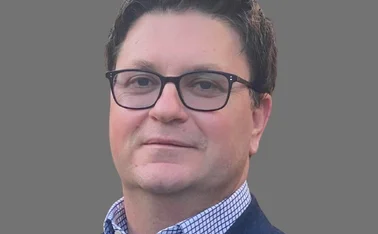
Blog: Uber for claims – How the 'gig economy' could disrupt the loss adjusting sector

Chris Sandilands argues that the loss adjusting process is perfectly suited to being disrupted by the 'gig economy', leading to benefits for insurers and policyholders alike. Perhaps most surprisingly, using freelancers for claims surveys could lead to greater insight for insurers.
We were recently having a debate in the office about claims when a thought struck us: the personal lines loss adjusting process is perfectly suited to being disrupted by the 'gig economy'.
The 'gig economy' refers to platforms such as Uber, Task Rabbit or Deliveroo, which connect underutilised assets (taxis, freelancers, food) with demand.
In the case of claims, individuals would sign up as claims surveyors on our platform, and be allocated claims on the basis of factors such as geographic location, expertise and feedback rating. Our surveyors collect information using an app on their mobile device, possibly with live guidance from a technical expert who is 'beamed in' from HQ.
We see three main benefits compared to the existing adjusting model.
First, operational efficiency will be improved and operating costs reduced. The crowdsourcing model variabilises the large fixed cost of an employed field force, which is helpful given the seasonal nature of many personal lines claims. The potential scale of a crowdsourcing platform also reduces the large distances that field forces often have to travel each day.
Second, the experience for policyholders is improved. For example, freelancers can be on site quickly and out of hours and they are less likely to be late given the reduced distance to travel. Through remote imaging technology, freelancers can connect with subject matter experts in HQ who can request additional information from the visit. This reduces the need for follow-up visits - and comprehensive evidence reduces fraud.
Third, insurers' claims data and insight is enhanced - perhaps ironically, given that the model removes the technical expert from the front line. Crowdsourcing is a digital model, and digital models put data and analytics front and centre. By building a structured data collection platform, insurers will gain detailed insight on all steps of the claims experience from the causes of the loss to the claims process.
Naturally there are also challenges and questions.
Examples of these could include:
Who would be the surveyors on the platform?
Identifying the ideal profile of surveyor will be an organic process based on analysis of data on the platform. We speculate that the required qualities will be: empathy with the policyholder, reliability and trustworthiness, and an instinct about what is important to photograph when conducting a survey.
Ideal target groups might be teachers in their holidays, full-time parents who want to work when their children are at school or freelancers with spare capacity. Builders would score highly on practical insight into structural losses, and insurers could extend the platform into a trusted network of local suppliers.
One point that needs resolution is how to ensure that the model does not become the snooping burglar's platform of choice. We believe that this risk can be mitigated by doing background checks on freelancers, in a way not dissimilar to how Uber conducts this process.
But these surveyors don't know anything about adjusting
We think that remote imaging/communications, and to some extent artificial image recognition, are now so powerful that our surveyors' role becomes to collect information for processing either automatically or at HQ.
Our surveyors arrive at the location quickly, build a relationship with the policyholder, and through a phone or tablet app collect data for a technical expert in HQ. To the extent that it is required, they can 'beam' a technical expert into the location to support the job.
How do you ensure quality in the workforce?
Central to the 'gig economy' is mutual feedback. Every time you ride in an Uber, you're asked to rate the driver and the driver rates the rider. Upwork, a website for freelancers, allows users to rate their job on a number of dimensions. We think a similar mechanism would work for adjusting.
So, in conclusion, the potential benefits far outweigh the challenges. How happy would the average customer be if a friendly surveyor turned up within two hours of a claim occurring?
Adjusting firms and insurers have an opportunity to develop and test this model now before an external entrant tries it out.
Chris Sandilands
Founding partner, Oxbow Partners

Only users who have a paid subscription or are part of a corporate subscription are able to print or copy content.
To access these options, along with all other subscription benefits, please contact info@postonline.co.uk or view our subscription options here: http://subscriptions.postonline.co.uk/subscribe
You are currently unable to print this content. Please contact info@postonline.co.uk to find out more.
You are currently unable to copy this content. Please contact info@postonline.co.uk to find out more.
Copyright Infopro Digital Limited. All rights reserved.
As outlined in our terms and conditions, https://www.infopro-digital.com/terms-and-conditions/subscriptions/ (point 2.4), printing is limited to a single copy.
If you would like to purchase additional rights please email info@postonline.co.uk
Copyright Infopro Digital Limited. All rights reserved.
You may share this content using our article tools. As outlined in our terms and conditions, https://www.infopro-digital.com/terms-and-conditions/subscriptions/ (clause 2.4), an Authorised User may only make one copy of the materials for their own personal use. You must also comply with the restrictions in clause 2.5.
If you would like to purchase additional rights please email info@postonline.co.uk








